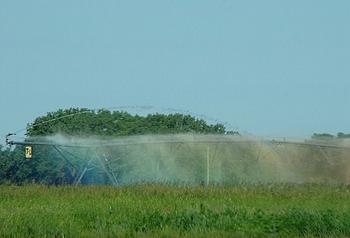
RESTON, Virginia, May 23, 2013 (ENS) – Aquifers across the United States are being drawn down at an increasing pace, finds a new study released today by the U.S. Geological Survey.
The report, “Groundwater Depletion in the United States (1900-2008),” evaluates long-term cumulative depletion volumes in 40 separate aquifers in the United States, bringing together information from previous studies and from new analyses of these distinct underground water storage areas.

“Although groundwater depletion is rarely assessed and poorly documented, it is becoming recognized as an increasingly serious global problem that threatens sustainability of water supplies,” writes report author USGS hydrologist Leonard Konikow.
Since 1950, the use of U.S. groundwater resources for agricultural, industrial, and municipal purposes has expanded. When groundwater is withdrawn from subsurface storage faster than it is recharged by precipitation or other water sources, the result is groundwater depletion.
The depletion of aquifers has many negative consequences, including land subsidence, reduced well yields, and diminished spring and stream flows.
“Large cumulative long-term groundwater depletion also contributes directly to sea-level rise,” Konikow writes, “and may contribute indirectly to regional relative sea-level rise as a result of land subsidence.”
Groundwater depletion in the United States in the years 2000-2008 can explain more than two percent of the observed global sea-level rise during that period, Konikow found.
To demonstrate the scale of depletion across the country, data from the report show that from 1900 to 2008, the nation’s aquifers were drawn down by more than twice the volume of water found in Lake Erie.
“Groundwater is one of the nation’s most important natural resources. It provides drinking water in both rural and urban communities. It supports irrigation and industry, sustains the flow of streams and rivers, and maintains ecosystems,” said Suzette Kimball, acting USGS Director.

“Because groundwater systems typically respond slowly to human actions, a long-term perspective is vital to manage this valuable resource in sustainable ways,” Kimball said.
The maximum rates of depletion have occurred during the most recent period of the study from 2000 to 2008, when the depletion rate averaged almost 25 cubic kilometers per year.
By comparison, 9.2 cubic kilometers per year is the historical average calculated over the entire 1900–2008 timespan of the study.
One of the best known and most investigated aquifers in the country is the High Plains aquifer, also called the Ogallala aquifer. It underlies more than 170,000 square miles of the Midwest and represents the principal source of water for irrigation and drinking in this agricultural area.
Substantial pumping of the High Plains aquifer for irrigation since the 1940s has resulted in large water table declines that exceed 160 feet in places.
The USGS study shows that, since 2000, depletion of the High Plains aquifer is continuing at a high rate.
The depletion from 2001 through 2008 is about 32 percent of the cumulative depletion in this aquifer during the entire 20th century.
The annual rate of depletion during this recent period averaged about 10.2 cubic kilometers, roughly two percent of the volume of water in Lake Erie.
The cumulative volume of groundwater depletion in the United States during the 20th century is large – totaling about 800 cubic kilometers and increasing by an additional 25 percent during 2001–2008 to a total volume of approximately 1,000 km3.
Cumulative total groundwater depletion in the United States accelerated in the late 1940s and continued at an almost steady linear rate through the end of the century.
In addition to the environmental consequences, depletion also adversely affects the long-term sustainability of groundwater supplies to help meet the nation’s water needs.
Copyright Environment News Service (ENS) 2013. All rights reserved.
© 2013, Environment News Service. All rights reserved. Content may be quoted only with proper attribution and a direct link to the original article. Full reproduction is prohibited.
